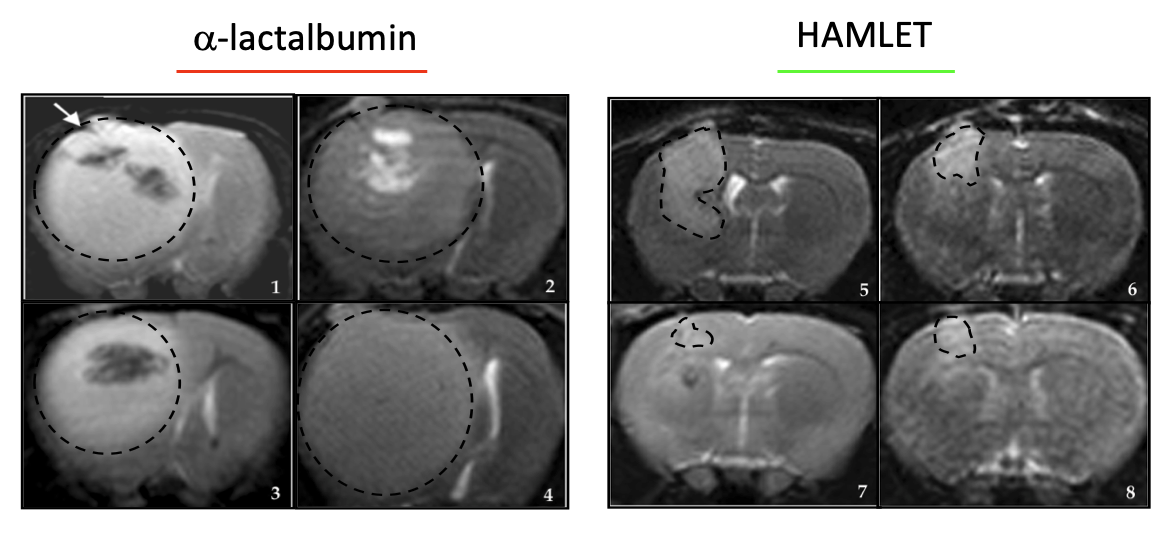The brain and spinal cord form the central nervous system, where vital functions are controlled. Brain tumors that disturb those functions may be very destructive and the treatment of brain tumors is challenging, due to the lack of drugs that are efficient and suitable for delivery into the central nervous system. Unlike other organs, the brain does not easily tolerate invasive procedures, making surgical removal of tumors particularly difficult. In many cases, the location of tumors within the brain may render them inoperable without causing severe damage to vital neural structures.
- Glioblastoma is a fast-growing and often highly invasive brain cancer with a poor prognosis, accounting for more than half of all brain tumor cases in adults, with a median survival time measured in months.
- Tumors in the central nervous system can often be metastases from cancers in peripheral organs. In view of the broad anti-tumor effects of Alpha1H and the low toxicity, targeting metastatic tumors in the brain might be extremely useful.
Therapeutic potential of Alpha1H against brain tumors
HAMLET has shown great promise for the treatment of brain tumors, killing brain tumor cells of different origins. In an experimental brain tumor model HAMLET was shown to have potent therapeutic effects in vivo, reducing tumor cell growth, inducing apoptosis in tumor cells and extending survival. Laboratory studies have shown that Alpha1H, like HAMLET, effectively kills brain tumor cells.





